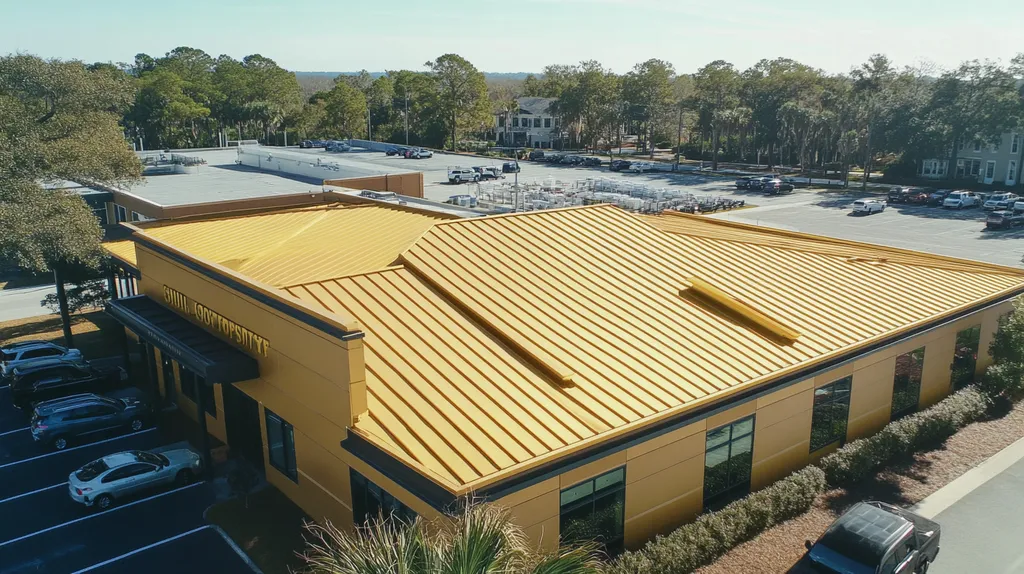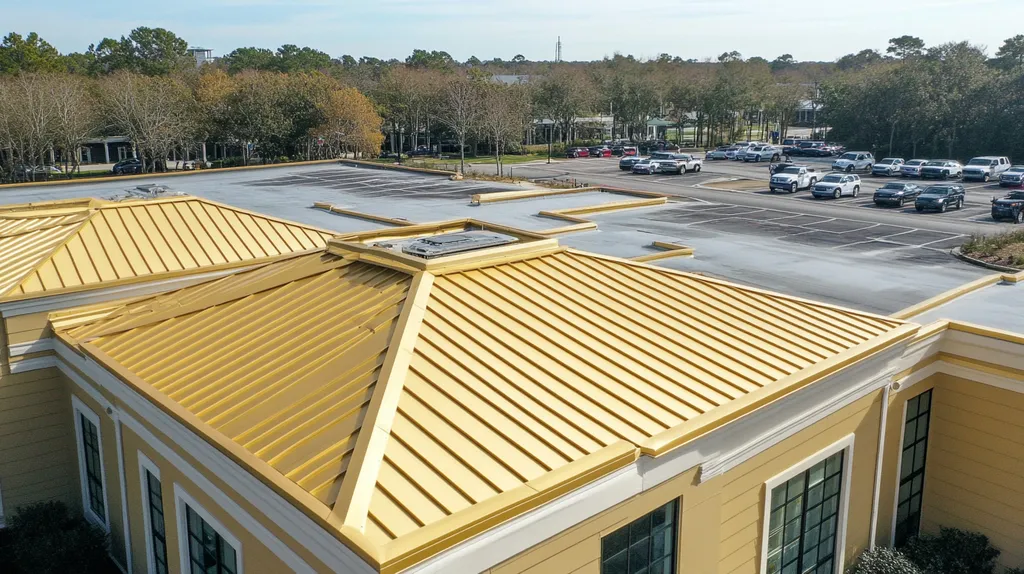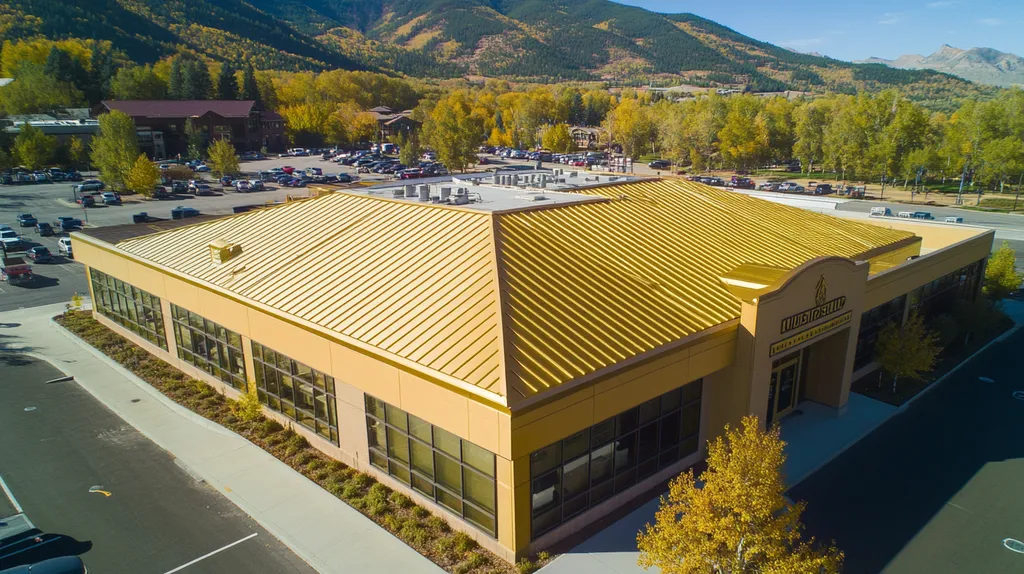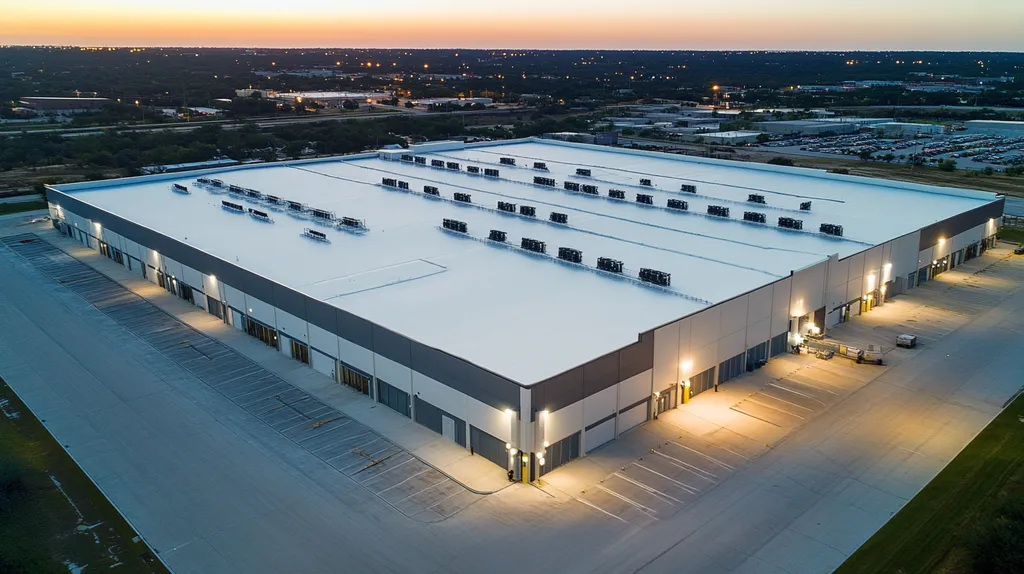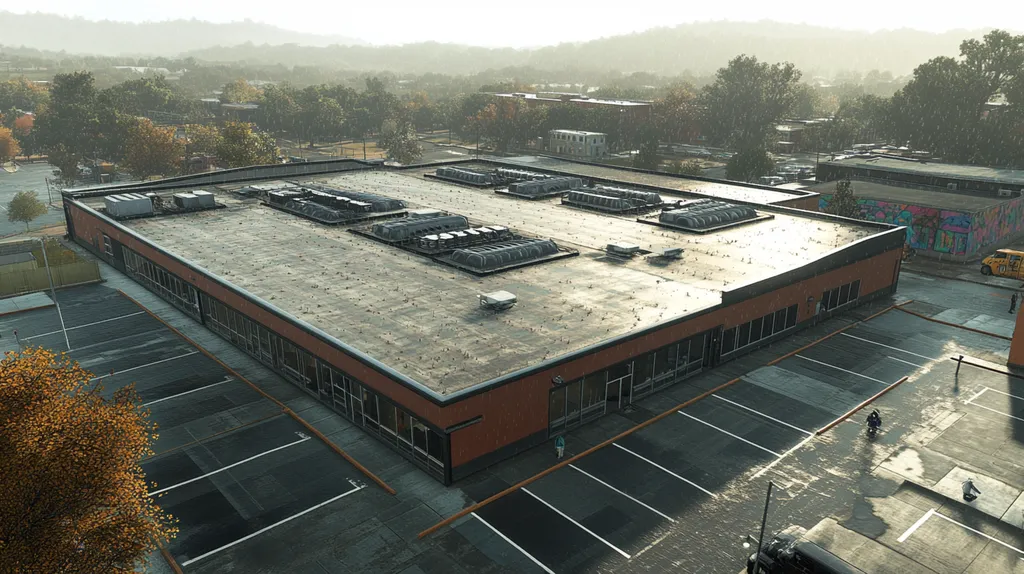Welcome to today’s Battle Royale featuring two roofing heavyweights: “TPO” in the east corner versus “PVC” in the west!
Tonight’s showdown pits these contenders against each other across six punishing rounds designed to test every aspect of their performance for Commercial Roof Investment.
At stake? Millions in potential costs, decades of building protection, and the critical performance demands of modern commercial and industrial facilities.
Our professional judging panel will evaluate each round on technical merit, real-world performance, and value delivery. After all six rounds, we’ll declare our ultimate champion.
Ladies and gentlemen, facility managers and building owners… it’s time to rumble!
ROUND 1: INITIAL COSTS & INSTALLATION
For facility managers and property owners, selecting the right commercial roofing system represents a critical financial decision that impacts operations for decades. A new commercial roof installation typically costs between $250,000 to $800,000 for a 20,000-square-foot facility, making it one of the largest capital expenditures a business will face.
Material Expenses
Material costs form the foundation of any roofing project’s budget, with significant variations between TPO and PVC systems. TPO materials typically range from $3.50 to $5.50 per square foot installed, making it an attractive option for cost-conscious decision-makers.
PVC materials command a premium price point, usually $5.00 to $7.50 per square foot installed. This higher cost reflects PVC’s advanced chemical formulation and enhanced durability characteristics.
While both materials meet commercial roofing standards, TPO’s lower price point delivers immediate savings. For a typical 20,000-square-foot roof, choosing TPO over PVC can reduce material costs by $30,000 to $40,000.
ADVANTAGE: TPO
Installation Complexity
Installation efficiency directly impacts labor costs and project duration. TPO’s lighter weight and flexibility make it easier to handle and position, reducing crew fatigue and minimizing installation errors.
PVC installation requires more specialized training and attention to detail, particularly around seams and penetrations. The material’s rigidity can make it more challenging to work with, especially in tight spaces or complex roof geometries.
TPO’s simpler installation process typically requires fewer labor hours and less specialized training. This translates to lower installation costs and reduced risk of installation-related problems.
ADVANTAGE: TPO
Project Timeline
Project duration affects both direct costs and business disruption. TPO installations generally progress 15-20% faster than comparable PVC projects, primarily due to easier material handling and simpler welding requirements.
PVC installations demand more precise measurements and careful handling, which can extend project timelines. Weather delays can have a greater impact on PVC installations due to stricter temperature requirements for proper welding.
The additional time required for PVC installation increases both labor costs and potential business disruption. For businesses where minimizing downtime is crucial, this difference becomes particularly significant.
ADVANTAGE: TPO
ROUND 1 WINNER: TPO
ROUND 2: DURABILITY & LIFESPAN
When investing in a commercial roof, durability and lifespan directly impact long-term financial performance. A premature roof failure can cost businesses hundreds of thousands in repairs, inventory damage, and operational disruptions. Understanding the durability differences between TPO and PVC becomes crucial when considering that replacing a commercial roof even 5 years earlier than planned can eliminate any initial cost savings.
Material Composition and Resilience
TPO membranes feature a flexible design that helps them withstand daily thermal cycles and building movement. This flexibility allows TPO to accommodate minor structural shifts without compromising the roof’s integrity. However, TPO’s chemical composition makes it more susceptible to UV degradation and extreme weather events.
PVC roofing demonstrates superior chemical resistance and maintains its physical properties even after decades of UV exposure. Its molecular structure creates natural fire resistance and prevents chemical breakdown from acid rain or industrial pollutants. The material’s inherent strength also provides better puncture resistance.
When evaluating material resilience, PVC’s enhanced chemical stability and superior weather resistance make it the clear choice for long-term performance.
ADVANTAGE: PVC
Maintenance and Repair Needs
TPO roofs typically require annual inspections and may need more frequent repairs as they age. While initial maintenance costs remain low, TPO becomes increasingly vulnerable to seam failures and surface deterioration after the first decade. This often results in escalating maintenance expenses in later years.
PVC systems demonstrate remarkable durability with minimal maintenance requirements. Their hot-air welded seams remain stable for decades, and the material’s resistance to biological growth reduces cleaning needs. Even when repairs are necessary, PVC’s weldability makes fixes more reliable and longer-lasting.
PVC’s lower lifetime maintenance requirements and superior repair characteristics provide significant advantages for facility managers focused on total cost of ownership.
ADVANTAGE: PVC
Expected Lifespan Under Typical Conditions
TPO roofing systems typically last 15-20 years when properly installed and maintained. Environmental factors like intense UV exposure or chemical pollutants can significantly reduce this lifespan. Manufacturing improvements have enhanced TPO durability, but real-world performance still varies considerably.
PVC membranes consistently achieve 20-30 year lifespans under similar conditions. Their proven track record in harsh environments and decades of successful installations support these longevity claims. Many PVC roofs installed in the 1980s remain in service today, demonstrating the material’s exceptional durability.
The extended service life of PVC systems provides compelling evidence of superior long-term value. This longer lifespan often justifies the higher initial investment through reduced replacement frequency.
ADVANTAGE: PVC
ROUND 2 WINNER: PVC
ROUND 3: PERFORMANCE FACTORS
Performance factors make or break a commercial roofing investment, with poor performance leading to premature failures that can cost businesses millions in repairs and lost productivity. Modern commercial roofs must withstand extreme weather events, constant UV exposure, and increasing mechanical stress from rooftop equipment.
Single-ply roofing systems have revolutionized commercial roofing by offering excellent UV resistance and energy efficiency while maintaining ease of installation. Understanding how TPO and PVC membranes perform under real-world conditions is crucial for making an informed investment decision. (source: Empire Roofing Systems Blog)
Temperature Resistance
Temperature resistance directly impacts a roof’s longevity and energy efficiency. Extreme temperature fluctuations can cause membrane shrinkage, expansion, and eventual failure if the material cannot maintain its integrity.
TPO membranes offer good reflective properties and heat resistance initially. However, prolonged exposure to high temperatures can accelerate material degradation, particularly at seams and stress points.
PVC demonstrates superior temperature stability across all climate conditions. Its chemical composition allows it to maintain flexibility and strength even after years of thermal cycling, making it particularly valuable in regions with extreme temperature variations.
ADVANTAGE: PVC
Puncture Resistance
Puncture resistance prevents costly water infiltration and maintains structural integrity. Regular foot traffic, maintenance activities, and falling debris constantly test a roof’s ability to resist penetration.
TPO membranes provide adequate puncture resistance when new but can become more vulnerable as they age. The material’s decreased flexibility over time can make it more susceptible to impact damage.
PVC roofing maintains superior puncture resistance throughout its lifespan. Its stronger molecular structure and reinforcement layers create better defense against penetration, reducing the risk of leaks and associated damage.
ADVANTAGE: PVC
Maintenance Requirements
Maintenance needs significantly impact the total cost of ownership and facility operations. Regular inspections and repairs require both financial resources and operational disruptions.
TPO systems demand more frequent inspections and maintenance as they age. Seam deterioration and surface wear often require increasing attention after the first decade of service.
PVC roofing typically requires minimal maintenance throughout its lifespan. Its superior chemical resistance and stable seam welds reduce the need for regular repairs, lowering long-term maintenance costs.
ADVANTAGE: PVC
ROUND 3 WINNER: PVC
ROUND 4: MAINTENANCE REQUIREMENTS
Maintenance decisions can make or break a commercial roofing investment. Industry data shows that inadequate maintenance leads to 70% of all roof failures before reaching half their expected lifespan. For a typical 20,000-square-foot commercial facility, addressing preventable maintenance issues can cost upwards of $50,000, not including business disruption and inventory damage.
Routine Inspection Requirements
TPO membranes require quarterly inspections during the first year to identify potential seam failures and surface degradation. After the initial period, bi-annual inspections become necessary to monitor UV damage and membrane flexibility.
PVC systems need only annual inspections due to their superior chemical stability and seam strength. The material’s inherent resistance to biological growth and chemical exposure reduces the frequency of detailed examinations.
When comparing inspection requirements over a 20-year period, TPO systems demand approximately 60% more inspection hours. This increased frequency directly impacts maintenance budgets and facility resources.
ADVANTAGE: PVC
Common Repair Scenarios
TPO roofs commonly experience seam failures and surface crazing as they age. These issues require specialized repair techniques and often lead to extensive maintenance interventions, especially after extreme weather events.
PVC membranes demonstrate exceptional durability with heat-welded seams that maintain integrity throughout their lifespan. The material’s chemical formulation provides superior resistance to punctures and tears, minimizing repair frequency.
TPO repairs often involve larger sections due to deterioration spread, while PVC repairs typically remain localized. This difference significantly impacts both repair costs and facility disruption.
ADVANTAGE: PVC
Long-term Maintenance Planning
TPO roofs show increasing maintenance needs after their first decade of service. Surface degradation accelerates, requiring more frequent interventions and potentially extensive restoration work to maintain performance. (source: CMB Roof)
PVC systems maintain consistent performance characteristics throughout their service life. Their superior chemical resistance and material stability translate to predictable maintenance schedules and fewer emergency repairs.
The difference in long-term maintenance patterns affects both budget planning and facility operations. PVC’s stability provides greater predictability for maintenance scheduling and cost forecasting.
ADVANTAGE: PVC
ROUND 4 WINNER: PVC
ROUND 5: SUSTAINABILITY CREDENTIALS
Environmental impact and sustainability have become critical decision factors in commercial roofing, with regulatory requirements and corporate sustainability goals driving investment choices. A poorly chosen roofing system can increase carbon footprints by up to 30% through excess energy consumption and waste generation, while also risking non-compliance with emerging environmental regulations.
Recyclability
End-of-life disposal impacts both environmental compliance and project costs. TPO membranes are designed with recycling in mind, featuring materials that can be effectively reprocessed into new products.
The recycling process for TPO is straightforward, with established programs accepting used materials. Many manufacturers offer take-back programs, reducing disposal costs and environmental impact.
PVC recycling faces significant challenges due to chemical additives and complex material composition. While technically recyclable, fewer facilities accept PVC roofing materials, often leading to landfill disposal.
ADVANTAGE: TPO
Energy Efficiency
Both TPO and PVC membranes offer strong energy-saving potential through their reflective surfaces. Initial solar reflectance values typically exceed 85% for both materials, contributing to reduced cooling costs.
TPO maintains its reflective properties longer, with minimal degradation over time. This sustained performance helps maintain energy efficiency throughout the roof’s lifespan.
PVC membranes show slightly faster degradation of reflective properties, requiring more frequent cleaning or recoating to maintain optimal energy performance. This maintenance requirement can offset initial energy savings.
ADVANTAGE: TPO
Overall Environmental Impact
Manufacturing processes significantly influence environmental impact. TPO production requires less energy and generates fewer emissions compared to PVC manufacturing. (source: Choice Roof Contractors)
TPO’s simpler chemical composition reduces the release of harmful substances during production and installation. The material’s lighter weight also decreases transportation-related emissions.
PVC manufacturing involves chlorine-based processes that can generate concerning byproducts. Additionally, the material’s higher weight increases transportation emissions and installation energy requirements.
ADVANTAGE: TPO
ROUND 5 WINNER: TPO
ROUND 6: SPECIALIZED APPLICATIONS
Specialized commercial roofing applications represent a critical decision point where choosing the wrong material can lead to premature failure and extensive damage. For facilities like food processing plants, chemical storage facilities, and high-traffic industrial buildings, standard roofing solutions often fall short. Recent studies show that improper material selection in specialized applications increases maintenance costs by up to 65% and reduces roof lifespan by nearly half.
Chemical Resistance
In industrial environments, roofing materials face constant exposure to harsh chemicals, oils, and industrial emissions. These substances can rapidly degrade standard roofing materials, leading to costly failures and potential environmental hazards.
TPO membranes offer moderate chemical resistance but can show signs of degradation when exposed to certain industrial chemicals and petroleum-based products. Their performance in highly acidic or caustic environments often requires additional protective coatings.
PVC roofing demonstrates exceptional resistance to chemicals, acids, and oils. Its molecular structure remains stable even under prolonged exposure to harsh industrial conditions, making it ideal for manufacturing facilities and chemical processing plants.
ADVANTAGE: PVC
High-Traffic Applications
Modern commercial roofs often serve as platforms for mechanical equipment maintenance, requiring excellent puncture resistance and durability under regular foot traffic. Single-ply membranes including TPO and PVC lead commercial roofing markets for flat roofs due to competitive pricing and energy efficiency. (source: Reimagine Roofing)
TPO systems can handle moderate foot traffic but may show premature wear patterns in high-traffic zones. Their flexibility helps absorb impact but can lead to surface degradation over time.
PVC membranes excel in high-traffic applications, maintaining their structural integrity even under frequent maintenance activities. Their superior puncture resistance and durability make them ideal for roofs requiring regular access.
ADVANTAGE: PVC
Extreme Weather Performance
Specialized applications often expose roofing materials to extreme weather conditions that can accelerate deterioration. Temperature fluctuations, high winds, and intense UV exposure create unique challenges for roofing materials.
TPO demonstrates excellent performance in extreme heat and cold, with superior flexibility that accommodates thermal cycling. Its reflective properties help maintain consistent surface temperatures, reducing thermal stress.
PVC performs well in extreme conditions but can become more rigid in cold temperatures. While it offers good UV resistance, its thermal expansion characteristics may require more attention to detail during installation.
ADVANTAGE: TPO
ROUND 6 WINNER: PVC
AND THE WINNER IS…
After six grueling rounds of technical evaluation, we have our verdict…
In a decisive 4-2 victory, PVC emerges as our commercial roofing heavyweight champion! This powerhouse performer dominated the crucial categories of durability, performance, maintenance, and specialized applications, showcasing its superior staying power and technical excellence.
PVC’s championship-caliber qualities shone through with exceptional chemical resistance, outstanding puncture protection, and minimal maintenance requirements – delivering the kind of long-term performance that keeps facility managers sleeping soundly at night.
However, don’t count TPO out of the fight completely! This scrappy contender proved its worth by clinching both the cost and sustainability rounds. For budget-conscious projects in moderate climates with lower chemical exposure, TPO remains a solid choice that can go the distance.
Important Ringside Notice: Every building brings its own unique challenges to the match. Local climate conditions, facility usage patterns, and specific property requirements can all impact performance outcomes. While this analysis provides general guidance, property owners should always consult qualified roofing professionals who can evaluate their specific situation before making their final selection.
Ladies and gentlemen, in the high-stakes world of commercial roofing, remember: The true champion isn’t the material that wins on paper – it’s the one that best protects your specific facility for decades to come. Choose your fighter wisely!
FREQUENTLY ASKED QUESTIONS
Q. What are the initial costs for a commercial roof?
A. A commercial roof typically costs between $250,000 to $800,000 for a 20,000-square-foot facility. TPO materials generally range from $3.50 to $5.50 per square foot installed, while PVC costs between $5.00 and $7.50 per square foot. Choosing TPO can save you $30,000 to $40,000 in material costs.
Q. How do TPO and PVC compare in durability for an industrial roof?
A. PVC systems are more durable than TPO, lasting 20-30 years compared to TPO’s 15-20 years. PVC’s molecular structure significantly enhances chemical resistance and longevity, especially in harsh environments. Choosing the right material prevents premature roof failure and costly repairs.
Q. Which roofing material has better performance for commercial roofs?
A. PVC outperforms TPO in essential factors such as temperature and puncture resistance. It maintains structural integrity under extreme conditions better than TPO. Investing in the right roofing material can save you significant costs in maintenance and energy efficiency over time.
Q. What maintenance requirements should I expect for a commercial roof?
A. TPO requires more frequent inspections, approximately every six months, while PVC needs only annual inspections. This disparity affects long-term costs and resources. A reliable maintenance schedule can prolong the life of your commercial roof and reduce unexpected expenses.
Q. Which roofing material is more sustainable for commercial roofs?
A. TPO has the edge in recyclability and energy efficiency compared to PVC. TPO is easier to recycle and has better reflective properties, which help reduce cooling costs. Selecting sustainable materials minimizes your environmental impact while meeting regulatory requirements.
Q. Are TPO and PVC suitable for specialized commercial roofing applications?
A. PVC is far superior for specialized applications that require chemical resistance and durability, such as food processing or chemical storage. TPO may not withstand harsh conditions as effectively. Choosing the correct material ensures your roof meets operational demands without frequent repairs.
Q. How can I choose the best commercial roof material for my needs?
A. Assess your budget, facility requirements, and anticipated maintenance needs. Consider long-term factors like durability, energy efficiency, and sustainability in your decision. Consulting with a roofing contractor can provide insights tailored to your specific situation and help prevent costly mistakes.

